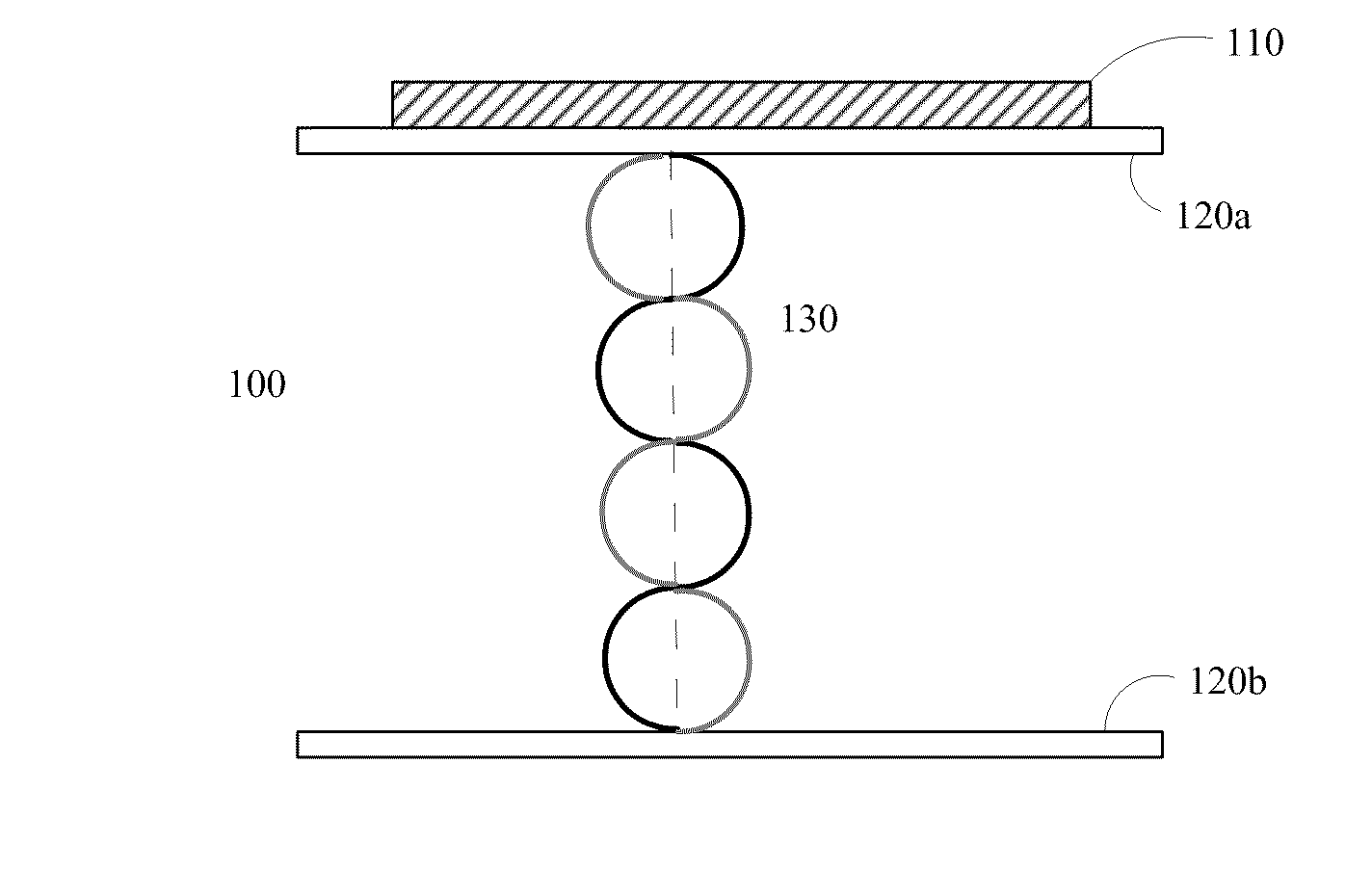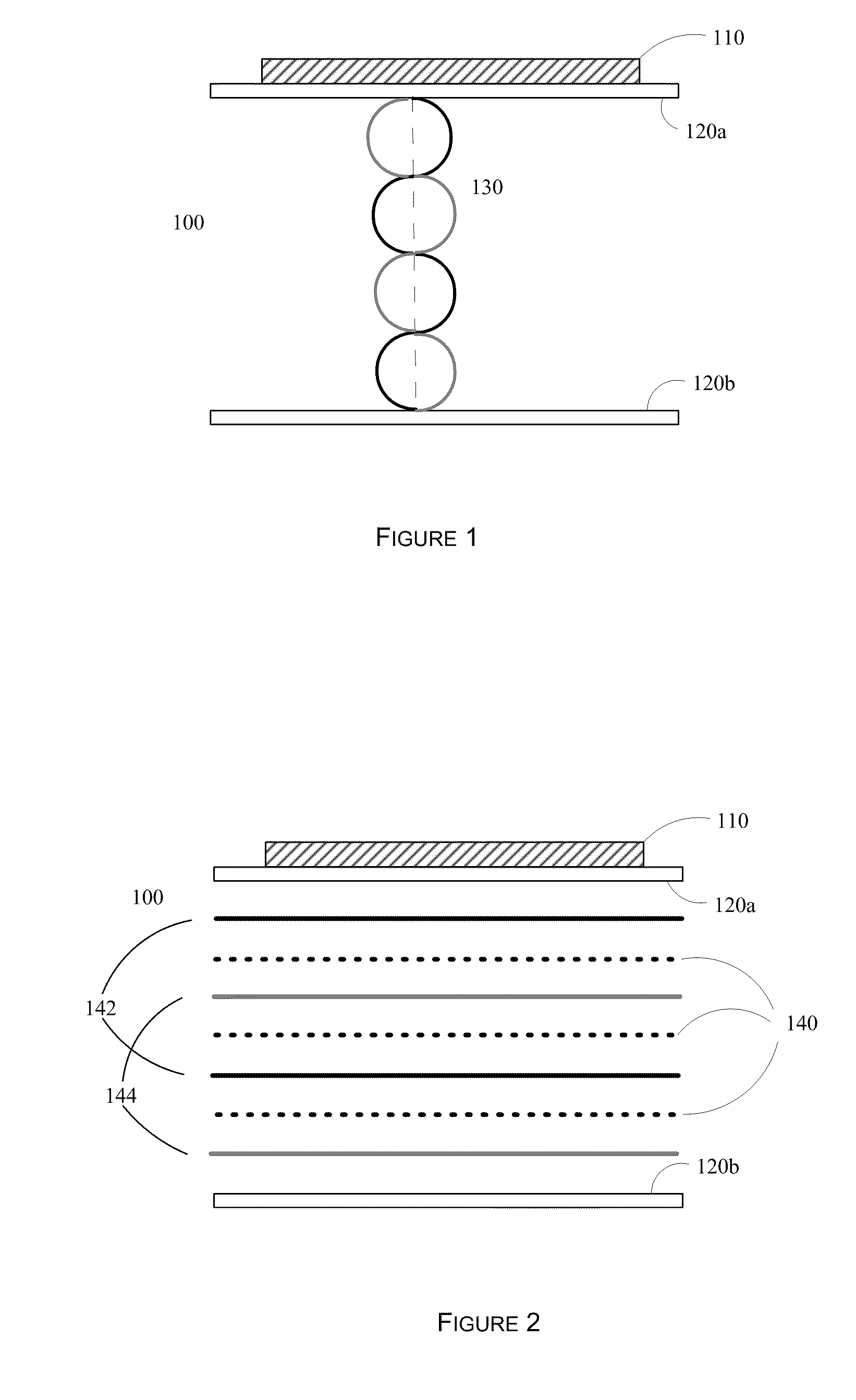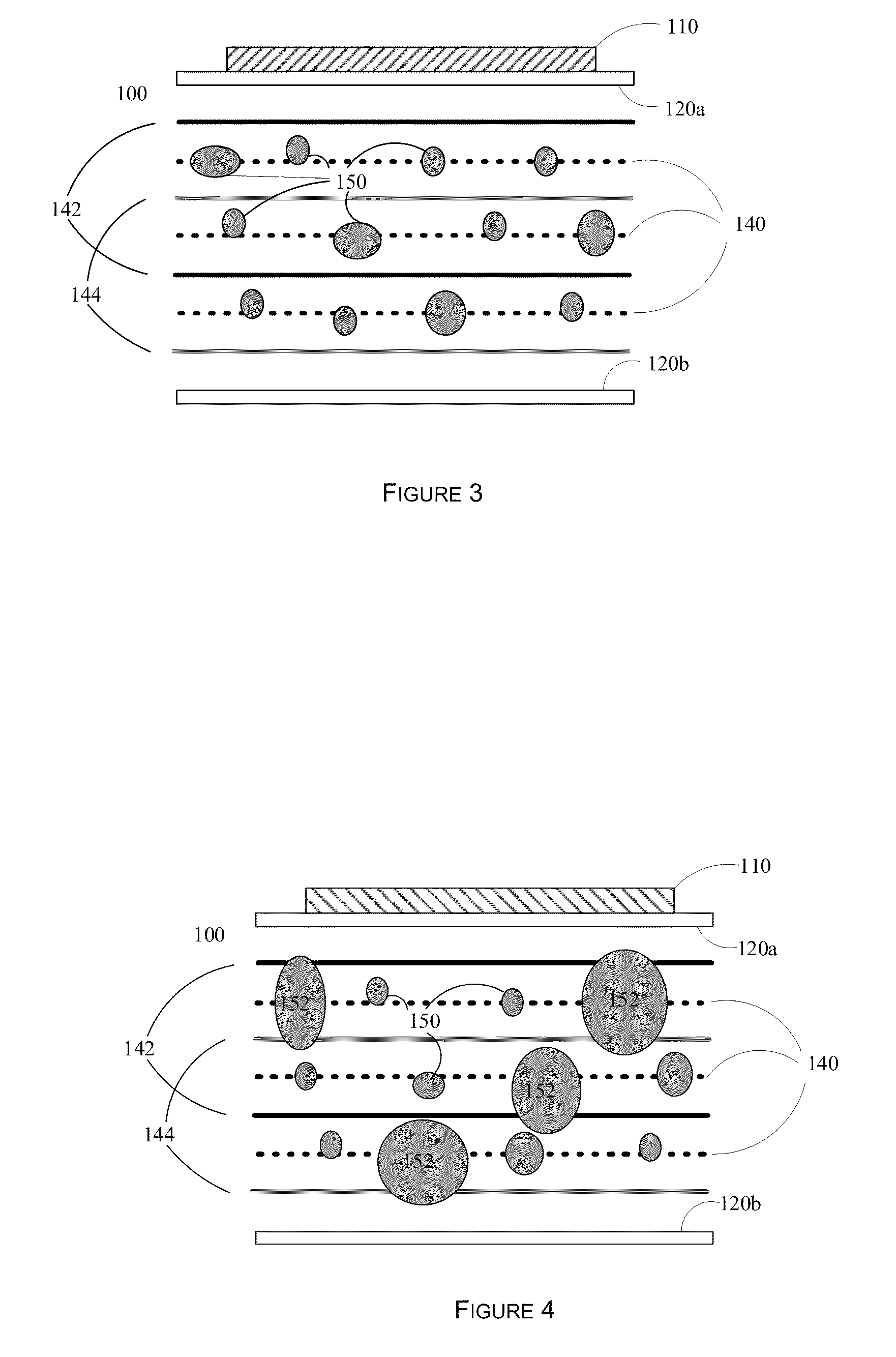Selective lysing of cells using ultrasound
a technology of lysing and cells, applied in the field of selective lysing of cells using ultrasound, can solve the problems of destroying cells, affecting the effect of the entire filtering process, and more likely to undergo necrosis, so as to achieve high acoustic contrast and relatively easy separation
- Summary
- Abstract
- Description
- Claims
- Application Information
AI Technical Summary
Benefits of technology
Problems solved by technology
Method used
Image
Examples
example 1
[0065]As a design example, assume that it is desired to preferentially affect cells at or above 250 microns (0.250 mm) in diameter. Thus the distance between the anti-nodal planes 142 and 144 would be set to 250 microns. The nodal planes are illustrated as 140. From this, the wavelength of the acoustic standing wave field would be 0.5 mm. Assuming a speed of sound in the aqueous medium of 1500 m / s (similar to that of water), then the frequency of operation is 3 MHz. Numerous transducers of different sizes, dimensions, and power handling capabilities are available at this frequency. The distance between the bottom surface of plate 120a and the top surface of plate 120b would then need to be an integral number of wavelengths, for example 1.0, 1.5, 2.0, 2.5 mm, etc. The distance between the plates also affects the total flow through the device 100, as a larger distance allows more fluid to flow through, assuming a constant transit velocity for the aqueous solution containing the cells....
PUM
| Property | Measurement | Unit |
|---|---|---|
| diameter | aaaaa | aaaaa |
| sizes | aaaaa | aaaaa |
| size | aaaaa | aaaaa |
Abstract
Description
Claims
Application Information
 Login to View More
Login to View More - R&D
- Intellectual Property
- Life Sciences
- Materials
- Tech Scout
- Unparalleled Data Quality
- Higher Quality Content
- 60% Fewer Hallucinations
Browse by: Latest US Patents, China's latest patents, Technical Efficacy Thesaurus, Application Domain, Technology Topic, Popular Technical Reports.
© 2025 PatSnap. All rights reserved.Legal|Privacy policy|Modern Slavery Act Transparency Statement|Sitemap|About US| Contact US: help@patsnap.com



